Speaking of Nature: Not the bird visitor I was expecting: A perfect comparison of an adult and an immature Sharp-shinned hawk
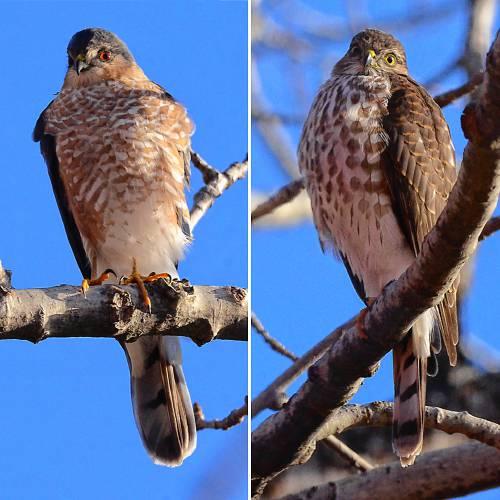
The adult sharp-shinned hawk (left) has red eyes and finer red markings on the breast and belly. The immature (right) has yellow eyes and coarser markings on the breast and belly. PHOTOS BY BILL DANIELSON
| Published: 11-20-2023 9:40 AM |
It was your standard November morning. I had a cup of coffee, I was adding notes on temperature and precipitation into my journal and I was keeping track of the arrival times and numbers of different species of birds. There was nothing out of the ordinary and it seemed as though the day might be a repeat of the day before, but then things changed very quickly, as they sometimes do in the birding world.
The Blue Jays had been arriving and departing from the cottonwood tree on a fairly regular basis, but all of a sudden the smaller birds scattered and a Blue Jay that wasn’t quite a Blue Jay arrived in the branches of the tree right above my deck. Peripheral vision couldn’t tell me much about the new arrival, but it isn’t necessarily uncommon for Blue Jays to cause a dustup. But even out of the corner of my eye I began to notice something a little off about the jay’s tail. It was too long and it warranted a closer look. So I raised my eyes from my notes and instantly found myself looking at a completely different bird that I had originally thought.
It was an adult Sharp-shinned hawk (Accipiter striatus) and I instantly uttered a curse. There was the hawk as plain as day and my camera was just out of reach on the kitchen table behind me. I considered making a move for the camera, but the bird was off like a flash and I figured that was that. Predatory birds often swoop past the deck to see if they can ambush the smaller songbirds and when they miss, they generally move on and don’t come back.
But then the impossible happened. For reasons that I cannot explain, the hawk returned to its perch.
This happened so quickly that I hadn’t had time to retrieve my camera, so another curse was uttered, but this time I was resolute in my decision to make a very gentle movement for my camera. It was a sunny day, the hawk was perched well above the deck and I reasoned that the reflections on the surface of the window glass might actually prevent the hawk from even seeing me. I gently turned, I gently reached, I gently resumed my original position and the hawk hadn’t moved. The photo gods were with me!
The Sharp-shinned Hawk is the smallest member of a group of raptors know as the “accipiters.” The members of this group include the Sharp-shinned hawk, the Cooper’s hawk and the Northern Goshawk (pronounced Goss-hawk). These birds are nearly carbon copies of one another with the main difference being their size. The Sharp-shinned hawk is the smallest and the Goshawk is the largest.
They all have long tails and relatively short, rounded wings and they all specialize on hunting other birds.
The Sharp-shinned hawk is about 11 inches long from head to tail and this is exactly the same length as that of the blue jay. As a result, they tend to focus their predatory efforts on birds that are smaller than blue jays, which means the little songbirds that frequent winter feeders are perfect targets. A Blue Jay would be a tall order for a “sharpie” and it is not all that uncommon to see Blue Jays and immature Sharp-shinned hawks “sparring” with one another in the autumn.
Article continues after...
Yesterday's Most Read Articles
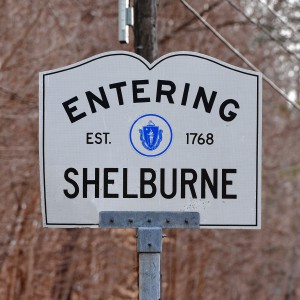 Serious barn fire averted due to quick response in Shelburne
Serious barn fire averted due to quick response in Shelburne
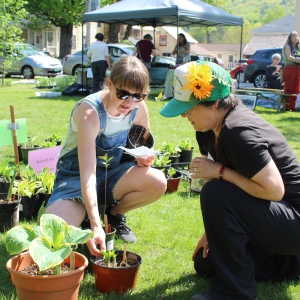 Bridge of Flowers in Shelburne Falls to open on plant sale day, May 11
Bridge of Flowers in Shelburne Falls to open on plant sale day, May 11
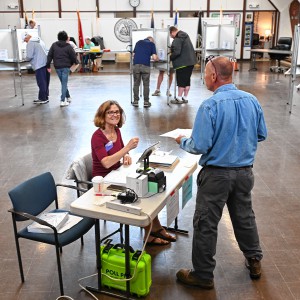 Political newcomer defeats Shores Ness for Deerfield Selectboard seat
Political newcomer defeats Shores Ness for Deerfield Selectboard seat
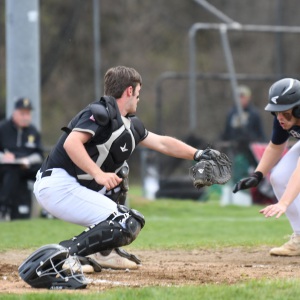 Roundup: Pioneer baseball wins Suburban League West title following 2-0 win over Hopkins
Roundup: Pioneer baseball wins Suburban League West title following 2-0 win over Hopkins
 As I See It: Between Israel and Palestine: Which side should we be on, and why?
As I See It: Between Israel and Palestine: Which side should we be on, and why?
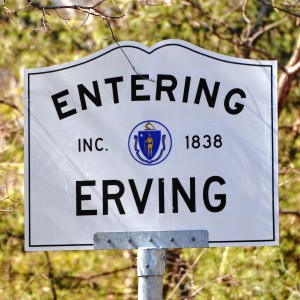 Employee pay, real estate top Erving Town Meeting warrant
Employee pay, real estate top Erving Town Meeting warrant
Adults are identified by the color of their plumage and the color of their eyes. The head and wings of an adult will be a dark graphite gray and the feathers of the breast and belly will be a gorgeous orange-red. If you can get close enough to one of these beautiful birds, then you may also be able to see that they have bright red eyes.
Immature birds are generally brown in appearance and the decorations on their breasts and bellies are a little less red and a little coarser in their pattern. Again, if you can get close enough to an immature bird, then you will see that they have bright yellow eyes instead of the red eyes of their parents. I thought of this comparison while I was taking photos of the adult and over the course of about 10 minutes I was able to take 300 photos. Eventually, the bird saw something it was interested in, or decided to move to a better spot, and off it went.
I was very excited about the entire encounter and about the photos that I had been able to take, but I wasn’t prepared for what happened next. Out of nowhere, as though Nikonus and Iso had ordered it to make an appearance, an immature Sharp-shinned Hawk arrived on the scene and perched in the same tree on almost the exact same branch. Like the adult, I lingered and posed for photos, which allowed me to finally capture some pictures that highlighted the difference in eye color. All I had to do was put the two photos side by side and it was good as a field guide. A perfect comparison of adult and immature.
So now I’m going to repeat the sort of advice that I offer up in the conclusions of many of my columns, and here it is: Take a moment to sit quietly and look outside every now and then. Put up a feeder, keep it stocked with seeds and see who shows up. Winter birds are all around us and they live their lives in plain view. All you have to do is watch and you are bound to see something amazing sooner or later.
Bill Danielson has been a professional writer and nature photographer for 26 years. He has worked for the National Park Service, the US Forest Service, the Nature Conservancy and the Massachusetts State Parks and he currently teaches high school biology and physics. For more in formation visit his website at www.speakingofnature.com, or go to Speaking of Nature on Facebook.

 Speaking of Nature: Indulging in eye candy: Finally, after such a long wait, it’s beginning to look like spring is here
Speaking of Nature: Indulging in eye candy: Finally, after such a long wait, it’s beginning to look like spring is here Celebrating ‘Seasonings’: New book by veteran preacher and poet, Allen ‘Mick’ Comstock
Celebrating ‘Seasonings’: New book by veteran preacher and poet, Allen ‘Mick’ Comstock Faith Matters: How to still the muddy waters of overthinking: Clarity, peace and God can be found in the quiet spaces
Faith Matters: How to still the muddy waters of overthinking: Clarity, peace and God can be found in the quiet spaces A time for every purpose under heaven: Free sing-a-long Pete Seeger Fest returns to Ashfield, April 6
A time for every purpose under heaven: Free sing-a-long Pete Seeger Fest returns to Ashfield, April 6
